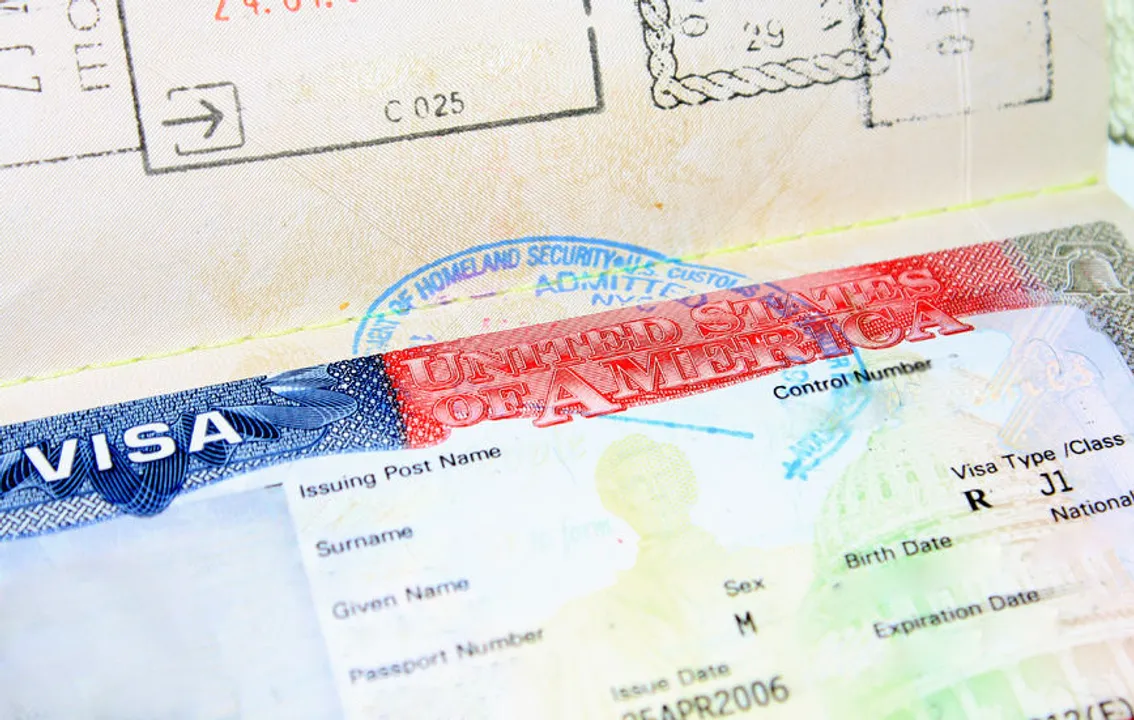Building the Rural Physician Workforce: The International Medical Graduate (IMG) on a J-1 Visa

miroslav110/123RF.com
Those in the primary care sphere predict physician shortages could reach north of 50,000 physicians by 2032. With just 9% of physicians practicing in rural communities where 25% make up the US population, rural recruiters must consider additional solutions and strategies to ensure rural primary care access is sustained. Advanced practice providers and technology-based care solutions are important to help close the primary care access gap, but International Medical Graduate (IMG)-delivered healthcare continues to be a critical piece to the solution as well. IMGs have proven quality and worth since the J-1 Conrad 30 Visa program began 25 years ago with its origins in work by Senator Kent Conrad (Kansas). IMG numbers are growing: close to 25% of physicians practicing in the US are non-US citizen IMGs; a small percentage of IMGs are US citizens that graduated from foreign medical schools. We will focus exclusively on non-US citizen, J-1 Visa-holding physicians and rural primary care placement of these IMGs. Those recruiters new to rural recruitment and hiring IMGs for rural primary care positions need tools and tips to engage these well-trained and patient-oriented physicians for their healthcare workforce.
Pursue IMGs with Quality Training Who are Board Eligible
IMGs attend medical schools outside of the US or Canada but train in US residencies and fellowships. The standards of entry for US training are governed by the Education Commission for Foreign Medical Graduates (ECFMG), an organization that has provided quality oversight of IMGs seeking US training for more than 60 years. An additional component of ECFMG oversight is that IMGs are required to take the United States Medical Licensing Examination (USMLE) to obtain a license to practice medicine in the US without restrictions. This involves passing the USMLE with at least 75% accuracy. At the forefront of ECFMG’s mission and work are quality initiatives to ensure that the best and brightest IMGs with excellent English as a second language (ESL) skills enter US training programs. Studies have shown that factors leading to quality physician care in the US are tied more to board certification versus native citizenship status or US medical school attendance. IMGs often come to the US with years of medical experience in their home country and essentially hit the reset button when they come to the US for primary care residency training.
Recognize Loan Debt Is Often Not A Consideration
For US citizens, the median tuition and fees for an in-state student to spend one year at a good, public medical school in the US is around $36,000. In some countries, international medical students rely on partial or even full state-supported tuition to pay for their medical school education. In other countries, up-front tuition costs may be less than one-third the cost of a US medical degree. Given that, most IMGs do not take out loans to pay for tuition; high medical and other healthcare professional student loan debt has the dubious honor of being largely an American fact of life. Rural recruiters looking to hire mainly IMGs for Critical Access Hospital or ambulatory care positions should note that such practice locations do not need to be NHSC-qualified to be attractive to IMGs. In fact, IMGs are ineligible for NHSC loan repayment and similar programs unless and until they obtain US citizenship. Alternatively, programs like the Conrad 30 J-1 visa waiver are designed to support inclusion of IMGs in the rural primary care workforce.
Find Cultural Fit
People are more likely to build rapport with their healthcare provider when there are commonalities – country of origin, ethnicity, etc. Nationally, the US Latino/Hispanic population makes up almost 17% of the total population. Texas, California, Arizona, Nevada and Florida have Latino/Hispanic populations ranging between 25-39%. It seems a no-brainer that matching primary care physicians by country of origin or culture to complementary rural opportunities is a solid fit. While training and medical school selection of Latino students remains too low in the US to meet cultural concordance in states with high minority Latino populations, groups like the Latino Policy and Politics Institute, based out of California, work on advocacy campaigns to help bolster both the US and Latino IMG workforce and draw attention to related challenges and propose solutions.
IMG Training, Triage and the Takeaways
IMGs often come to US residency training with significant medical practice experience within their home country. Like US Medical School graduates, IMGs have worked with patients who have complex medical conditions comparable to those in the rural US. Depending on home country origin, IMGs may gain intimate knowledge in how to work within a fragmented healthcare infrastructure, experiences transferable to practice in the rural US. Through these perspectives and experiences, IMGs are better able to navigate and utilize skills developed in their home country in rural primary care practice.
Consider the Conrad 30 Waiver Program, Great for Smaller States
Upon completing training, physicians on a J-1 Visa are expected to return to their home country to meet a two-year residency requirement to share the skills learned in US training in their home country. These physicians may seek a J-1 Visa waiver that allows them to stay and practice in the US for three years. Small or less populated states are best suited to the J-1 waiver program, as every state is allotted just 30 Conrad waivers without regard to size or need. Bolstering underserved primary care is the objective of the Conrad 30 waivers, so all states must set aside 25 slots for primary care, with the remaining five deemed flexible or “FLEX” slots assigned at the state’s discretion for non-primary care specialties in communities in need. Most rural communities are competitive for these waivers, but each state’s program may operate a little differently. J-1 waivers may be requested through State Health Agencies, typically through state Offices of Primary Care (PCO). These waivers require full-time employment in underserved communities with an expectation of employment for three years. That employment must start within three months of approval of the J-1 waiver. Your state PCO can be invaluable in helping navigate the process to obtain a J-1 Visa and serves as your partner for submission of these waiver requests.
Conrad 30 J1 Waiver Program Resources
- Practical Guide to Conrad 30 J-1 Waiver Program for Physicians and Employers
- USCIS Conrad 30 Waiver Program Information
- Find Your State Primary Care Office
Seek Alternate Avenues for J-1 Visa Holders
Those recruiting for Rural Health Clinics (RHCs) or Federally Qualified Health Centers (FQHs) have an additional tool of the Department of Health and Human Services (DHHS) path for J-1 Visa-holding IMGs. To qualify, RHCs or FQHCs must be in HPSA areas with scores of 7 or higher. Employers in states that are part of The Appalachian Regional Commission (ARC), an agency partnership of local, state, and federal governments, may obtain J-1 waivers through a comprehensive application process at the discretion of this program and for a flat fee. A similar program, Delta Doctors, through the Delta Regional Authority, helps IMGs with J-1 Visas get waivers through employment in “distressed” counties and parishes in Alabama, Arkansas, Illinois, Kentucky, Louisiana, Mississippi, Missouri, and Tennessee. There are other avenues for the primary care physician on a J-1 Visa; check with your PCO to see which may be a fit for your IMG’s situation. Always be mindful that working with J-1 Visa-holding physicians as they go through the waiver process requires additional time to ensure application requirements and deadlines are met so plan accordingly. For a one stop shop about working with physicians on J-1 Visas, checkout the National Rural Recruitment and Retention Network’s (3RNet) toolkit.
Additional Conrad 30 J1 Waiver Program Resources
- U.S. Exchange Visitor Program Overview and General Application Instructions
- Appalachian Regional Commission (ARC) C0-Chair's J-1 Visa Waiver Policy and Guidelines
- Delta Doctors J-1 Waiver Information
Support Your IMG Through Seeking A Green Card
Long before an IMG seeks a green card, she or he should hire a good immigration attorney, which will serve them well regardless of the path taken after the J1 Visa Waiver requirement is completed. Through a Green Card, IMGs can obtain permanent residence in the US to live and work here. Typically, IMG physicians obtain Green Cards through Program Electronic Review Management (PERM) Labor Certification or the National Interest Waiver (NIW). During the recruitment process and once a J-1 Visa Waiver and site are approved, the IMG physician files for the PERM Labor Certification with you signing off as the US employer. Be aware that PERM Labor Certification does involve your active participation to include proof that a promoted opportunity for the IMG’s proposed physician job did not yield any interest from US physician candidates. The next step in the process occurs after the IMG has completed the three-year service requirement of her or his J-1 Visa waiver. At that time, IMGs apply for PERM Labor Certification using Form I-485, the Adjustment of Status form. Another avenue, the National Interest Waiver (NIW), does not include employer involvement. The NIW can be filed at any time, but there is a five-year service requirement. The conditions are a good match for rural primary care IMGs seeking a NIW, as NIW requirements mandate that they practice in a shortage or medically underserved area. Cost to the IMG varies with the PERM Labor Certification and NIW. In all cases, be ready to prepare and provide appropriate documents to support your IMG physician in her or his path to obtain a green card.
Orient Your IMG to Rural Primary Care and the Community
It’s important to note the ways in which IMG physicians can be supported by rural communities. Provide an open, helpful demeanor, so that your IMG physician feels she or he can reach out to ask about commutable mosques, temples, or other religious houses of worship or services she or he may seek. Offer to help your IMG make personal connections in the community and serve as a resource and guide. Don’t neglect to meet with administrative staff and other clinicians about your new IMG physician’s role in the community and be clear about expectations in orienting her or him to the practice and community. Resources should include social media for your practice and hospital to help your IMG connect to virtual community support. Read up on the culture of your new physician and be mindful of any nuances in communication. Be aware that common US colloquialisms may not translate to your IMG’s language directly, so help her or him navigate small (but still big, in the scheme of things) hurdles around US figures of speech. Organizations like the International Federation of Medical Students’ Associations (IFMSA) and ECFMG’s acculturation program are tremendous resources for you and the rural primary care IMG. It’s a two-way street for success, with equal parts diligence, clear communication, and understanding to set a course for meaningful connections between your IMG primary care physician and your rural community.
Related Posts
